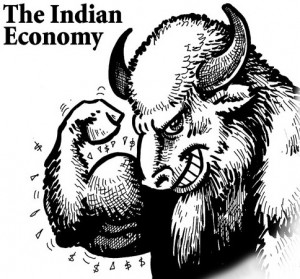Bradley Klapper writes: The Obama administration is putting a large dent in the U.S. embargo against Cuba as of Friday, significantly loosening restrictions on American trade and investment.
The new rules also open up the islland to greater American travel and allow U.S. citizens to start bringing home small amounts of Cuban cigars after more than a half-century ban.
Thursday’s announcement of new Treasury and Commerce Department regulations are the next step in President Barack Obama’s plan to re-establish diplomatic relations with Cuba. They come three days after U.S. officials confirmed the release of 53 political prisoners Cuba had promised to free.
Only Congress can end the five-decade embargo. But the measures give permission for Americans to use credit cards in Cuba and U.S. companies to export telephone, computer and Internet technologies. Investments in some small business are permitted. General tourist travel is still prohibited, but Americans authorized to visit Cuba need no longer apply for special licenses.
With the new regulations public, the focus shifts to American businesses and the Cuban government. Some changes could take months as U.S. firms analyze the risks and benefits of moving into a complicated new market. And the Cuban government has said nothing publicly about how it will regulate new trade with the United States. Foreign companies currently deal almost entirely with state-owned firms that are notoriously slow, inefficient and short on cash.
Cuba will likely be more open to a surge in new travelers than to other potential effects of the loosened rules.
But Cuban hotels generally fall short of international standards and those with better food and service are almost always fully booked during the winter high season.
Casting a shadow on potential deals is the possibility of litigation by Cuban-Americans and U.S. firms whose property was confiscated in Fidel Castro’s 1959 revolution and may try to sue companies entering into business with the Cuban government. In Washington, Congress may also seek to erect barriers to new investment.
Thomas Donohue, the head of the U.S. Chamber of Commerce said it was better for the U.S. to sell computers, smartphones and cars to Cuba than to cede such business to countries like Russia and China. Still, the embargo as a whole appears unlikely to fall anytime soon.
Starting Friday, U.S. companies will be able to export mobile phones, televisions, memory devices, recording devices, computers and software to a country with notoriously poor Internet and telecommunications infrastructure. Internet-based communications will fall under a general license. The new rules “immediately enable the American people to provide more resources to empower the Cuban population to become less dependent upon the state-driven economy,” White House spokesman Josh Earnest said Thursday.
The U.S. is now “one step closer to replacing out of date policies,” Treasury Secretary Jacob Lew said Thursday.
Other changes include:
—The elimination of limits on how much money Americans spend in Cuba each day or what they spend it on.
—Permissible use of U.S. credit and debit cards.
—Travel agents and airlines can fly to Cuba without a special license.
—Insurance companies can provide coverage for health, life and travel insurance policies for individuals residing in or visiting Cuba.
—Financial institutions may open accounts at Cuban banks to facilitate authorized transactions.
—Investments can be made in some small businesses and agricultural operations.
—Companies may ship building materials and equipment to private Cuban companies to renovate private buildings.
Further down the road, Washington envisions reopening the U.S. Embassy in Havana and carrying out high-level exchanges and visits between the governments. Secretary of State John Kerry could travel to the island later this year.



 Kathleen Kelley Reardon asks: Can you manage at work without politics? The answer to that question is, probably not. Wherever people come together seeking goals – whether the same or different ones – and especially where there is competition for scarce resources, politics is there. Political arenas run along a continuum from minimally to highly and even pathologically political. The character of the arena in which you work dictates the extent to which political acumen becomes a necessity.The political landscape where most of us work shifts over time. While it may be possible to remain a political purist (at least for a while) in some jobs in certain organizations, it is risky to wait around until politics reaches a point beyond your expertise.The more effective route is to prepare for politics. Keep in mind that not all forms of politics are devious or underhanded. Some political skills are actually no more than good people skills, like interpersonal sensitivity: knowing when to bring up which topics, when to push for something you believe is important, managing conflict to avoid unnecessary flare-ups, and causing others to feel good about working with you.Additional, relatively basic and constructive forms of political know-how include:
Kathleen Kelley Reardon asks: Can you manage at work without politics? The answer to that question is, probably not. Wherever people come together seeking goals – whether the same or different ones – and especially where there is competition for scarce resources, politics is there. Political arenas run along a continuum from minimally to highly and even pathologically political. The character of the arena in which you work dictates the extent to which political acumen becomes a necessity.The political landscape where most of us work shifts over time. While it may be possible to remain a political purist (at least for a while) in some jobs in certain organizations, it is risky to wait around until politics reaches a point beyond your expertise.The more effective route is to prepare for politics. Keep in mind that not all forms of politics are devious or underhanded. Some political skills are actually no more than good people skills, like interpersonal sensitivity: knowing when to bring up which topics, when to push for something you believe is important, managing conflict to avoid unnecessary flare-ups, and causing others to feel good about working with you.Additional, relatively basic and constructive forms of political know-how include:







